Tic disorders are characterized by the presence of involuntary, repetitive movements and sounds known as tics. These tics can be simple or complex and vary in severity and frequency.
Tics typically begin in childhood and can persist into adulthood, although they may fluctuate in intensity over time. The exact cause of tic disorders is not clearly known, but they are believed to involve a combination of genetic, environmental, and neurological factors.
The impact of tic disorders on daily life can be significant. Tics can interfere with academic and occupational performance, social interactions, and self-esteem. Individuals with tic disorders may experience embarrassment, frustration, and anxiety due to the involuntary nature of their tics.
A lot of people experience spasm-like movements of muscles at some point in life. These movements are classified as tics and twitches. They’re frequently seen affecting the eyelids or face but can occur anywhere in the body.
For a majority of people who experience tics and twitches, they are harmless and temporary manifestations of nerve spasms. However, for others, these tics may be due to a tic disorder.
For those with a tic disorder, their tics are often repetitive. Patients may experience them with multiple consecutive occurrences of the same movement or sound.
The most common tic disorder is transient tic disorder. Experts say it may affect up to 10% of children during the early school years.
Transient tic disorders are distinguished by the presence of one or more tics for at least one month but less than one year.
On the other hand, chronic tic disorders last for a year or more and are marked by the presence of one or more long-lasting tics.
Although tic disorders may afflict people of all ages, they are most often seen in children. And tics may impact boys more often than girls.
Tourette’s syndrome is the most well-known tic disorder. Other forms include chronic (motor or vocal) tic disorder and transient tic disorder. Motor tics affect movement, while vocal tics involve sounds or words.
Motor tic disorder involves uncontrollable movements. They manifest as sudden and repetitive actions that a person can't stop. Motor tics can vary in intensity and frequency, impacting daily activities and interactions. Some examples include:
Eye Blinking
Frequent, rapid eye movements are a common manifestation of motor tic disorder. You may experience bouts of blinking that occur unintentionally and persist for brief durations. The inability to regulate these eye movements distinguishes them as involuntary and repetitive.
Facial Grimacing
Uncontrolled facial expressions, such as grimacing, are another facet of motor tic disorder. The patient may exhibit facial contortions or movements that go beyond typical expressions. These actions happen suddenly and are repetitive, causing discomfort as the patient struggles to manage or suppress them.
Motor tics can involve simple tic movements, such as blinking the eyes, twitching the nose, jerking the head, or shoulder-shrugging. However, some people may have complex motor tics.
Complex tics comprise a sequence of actions performed in the same order. For example, touching something repeatedly or kicking out with one leg and then the other.
Vocal tic disorder is characterized by involuntary sounds a person makes. These can be unexpected noises that happen repeatedly. Examples include:
Throat Clearing
Repetitive clearing of the throat is a distinctive feature of vocal tic disorders. Even when throat-clearing isn't necessary, patients may be compelled to produce this sound involuntarily and repeatedly. The persistence of this tic can lead to discomfort and may draw attention to the person experiencing it.
Grunting
Unintentional grunting sounds, occurring without the person's desire or control, represent another aspect of a vocal tic disorder. These abrupt vocalizations may manifest repeatedly, impacting a person’s capacity to communicate and engage in social interactions naturally.
Tourette’s syndrome is a specific tic disorder characterized by both motor and vocal tics lasting at least one year. These tics may be simple manifestations, such as eye blinking or throat clearing, or more complex with uncoordinated movements and spoken words.
Tourette’s syndrome is the most intense type of tic disorder. A large number of people with this condition lead normal lives, but it can present challenges.
Those with Tourette’s syndrome may face challenges in social situations or at school. However, with compassionate support, they can manage their symptoms and live fulfilling lives.
Understanding the potential factors contributing to the development of tic disorders is crucial for its management. Tics often have triggers that can exacerbate their frequency or intensity.
Common triggers may include:
- Stress
- Fatigue
- Heightened emotional states
Recognizing and addressing these triggers play a vital role in developing effective strategies for coping with tic symptoms.
Diagnosing tic disorders involves a comprehensive evaluation by a neurologist or psychiatrist. They assess the nature and frequency of tics to rule out other possible causes.
They may also consider the presence of any associated conditions, such as attention-deficit/hyperactivity disorder (ADHD) or obsessive-compulsive disorder (OCD).
Treatment options for tic disorders usually aim to manage symptoms and improve quality of life.
At Haynes Neurosurgical Group, we may prescribe medications, including dopamine antagonists or alpha-2 adrenergic agonists, to help suppress tics. Other treatment options may include neurosurgical interventions, such as:
- Deep Brain Stimulation (DBS): Electrical stimulation is delivered through electrodes implanted in the brain to modulate abnormal brain activity.
- Radiosurgery: A non-invasive procedure where focused radiation beams target affected areas of the brain.
- Neuroendoscopy: A minimally invasive technique that involves using small, flexible tubes equipped with cameras to explore and treat specific brain regions.
- LITT (Laser Interstitial Thermal Therapy): A minimally invasive surgical technique using laser light to treat abnormalities in the brain. Considered in specific cases where precise targeting is needed in the treatment of brain lesions that cause tic disorders.
Hemifacial spasm is a neurological disorder characterized by involuntary and repetitive contractions or twitching of the muscles on one side of the face. Hemifacial spasm is not classified as a tic disorder.
Hemifacial spasms typically begin around the eye and then progress to involve other facial muscles, causing visible and sometimes uncomfortable facial movements. These contractions are often more sustained and rhythmic than the quick, sudden movements seen in tic disorders.
While both hemifacial spasm and tic disorders involve involuntary movements, they are distinct conditions with different underlying mechanisms and characteristics. The primary cause of hemifacial spasm is the compression of the facial nerve by a blood vessel (often an artery), leading to irritation and hyperactivity of the nerve. In some cases, it can be associated with nerve damage or facial nerve injury.
The main symptom of hemifacial spasm is involuntary muscle contractions on one side of the face, starting around the eye and progressing to other facial muscles. These spasms can be intermittent or continuous and may range from mild twitching to severe, sustained contractions.
Diagnosing hemifacial spasms involves a thorough examination of symptoms and medical history. Imaging studies, such as magnetic resonance imaging (MRI), may be performed to visualize the facial nerve and identify any compression or abnormalities.
Treatment options for hemifacial spasms can include both non-invasive measures to surgical interventions:
- Botulinum Toxin Injections: Botulinum toxin injections, such as Botox, are often used to paralyze the muscles and reduce spasms temporarily.
- Microvascular Decompression: This neurosurgical procedure involves repositioning or placing a buffer between the compressing vessel and the nerve to alleviate irritation.
At Haynes Neurosurgical Group, we offer neurosurgical interventions for tic disorders when other treatments have not provided satisfactory results. We consider each patient’s case individually to determine the best course of action.
Our seasoned neurosurgeons use highly advanced technologies and employ a patient-centric ethos at Alabama’s premiere neurosurgical practice.
To schedule a consultation with one of our experts, call us at (205) 787-8676 or request an appointment online.


